In addition to pho, banh mi, and other delicious savory specialties, Vietnam offers a wide variety of unique and attractive candies. Vietnamese candy comes in many different types and forms, appealing not only to children but also to adults, locals, and tourists alike. These delightful treats also make for wonderfully affordable souvenirs to bring home after each trip.
Let’s explore the world of Vietnamese candy with Joy Journeys!
Contents
Traditional Vietnamese Candies
Traditional Vietnamese candies are often elaborately and entirely handmade, making them ideal as souvenirs that showcase Vietnam’s culinary artistry.
Keo Dua (Coconut Candy)
Coconut candy is one of the most popular Vietnamese candies and a signature specialty of Ben Tre, the largest coconut-producing region in Vietnam. With its abundant coconut supply, the region has developed numerous products to enhance its value, and coconut candy stands out as a favorite.
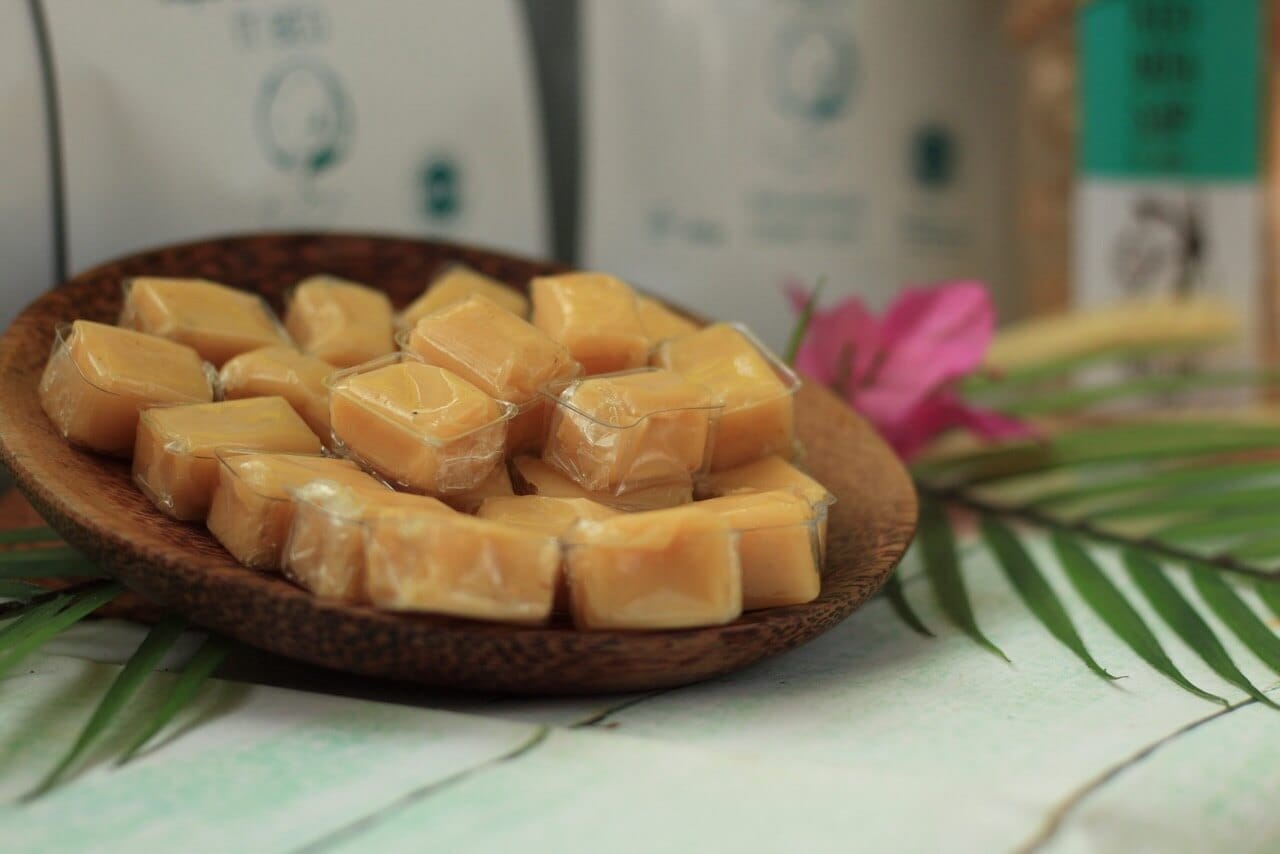
Made from simple ingredients like coconut and malt, this chewy and delicious treat has become a traditional craft in Ben Tre. Today, coconut candy is not only enjoyed locally but also exported to international markets, including Japan, Korea, and the United States.
Keo Me Xung (Sesame Brittle)
This popular Vietnamese candy hails from Hue, a central province renowned for its culinary heritage. Made from tapioca starch, malt, peanuts, sesame, and other ingredients, sesame brittle is shaped into small square pieces and beautifully packaged.
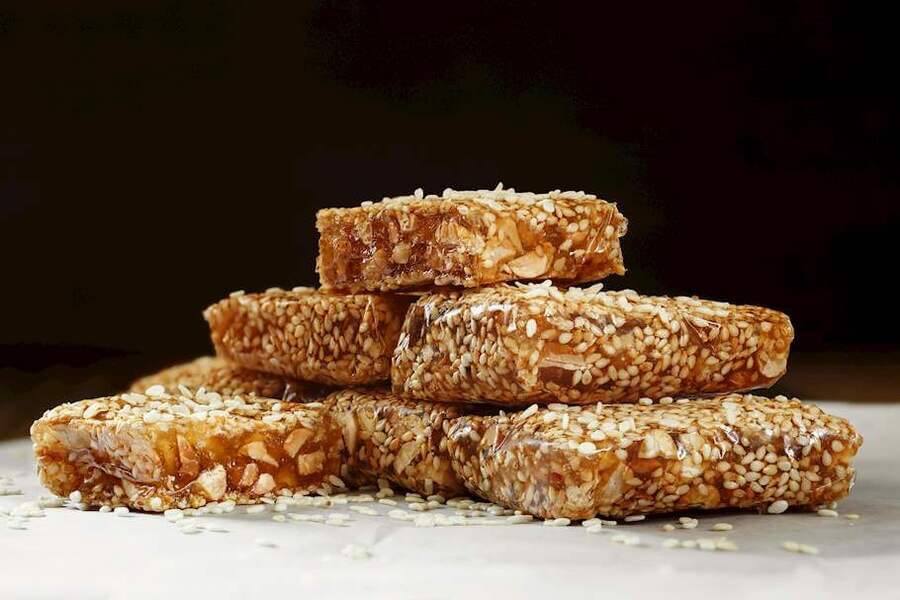
Its chewy, elastic texture and the nutty flavor of roasted peanuts and sesame seeds make it truly unique. For a lighter option, crispy sesame candy—sandwiched between two layers of rice paper—is less sweet and equally delightful. Traditionally, both types of sesame candy are enjoyed with hot tea during friendly chats.
Banh dau xanh (Mung Bean Cake)
Green bean cake is a beloved treat made from green bean flour, sugar, and either vegetable oil or lard. Shaped into small squares and wrapped in foil or greaseproof paper resembling gold bars, this candy is perfect for pairing with Chinese tea or green tea. The combination creates a relaxing and flavorful experience.
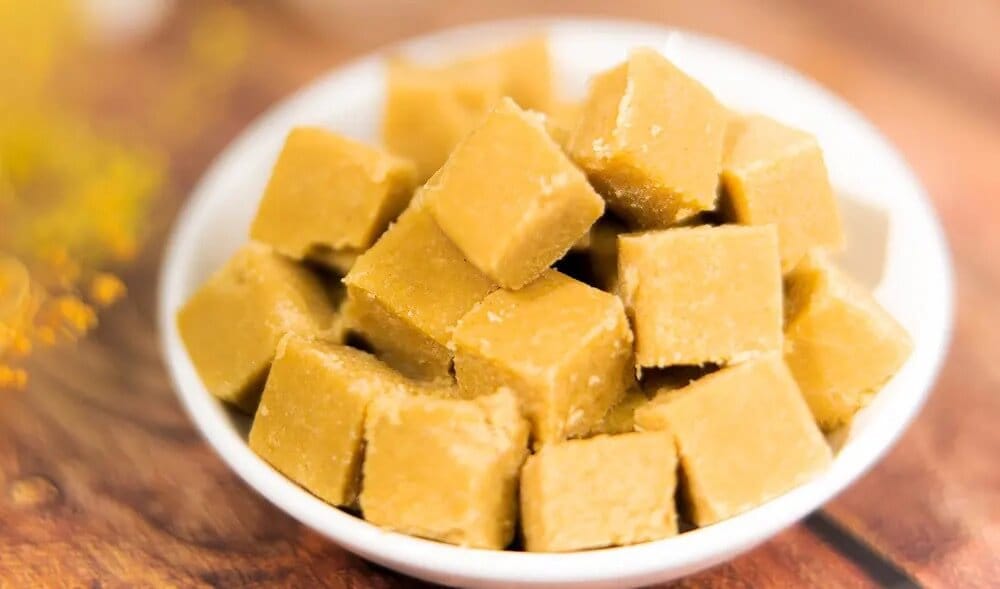
Other Traditional Treats
Vietnam’s diverse Vietnamese candy list also includes ‘keo gung’ (ginger candy), ‘keo lac’ (peanut candy), ‘keo chuoi’ (banana candy), and an array of dried fruit candies that are especially popular during Tet, the Vietnamese Lunar New Year.
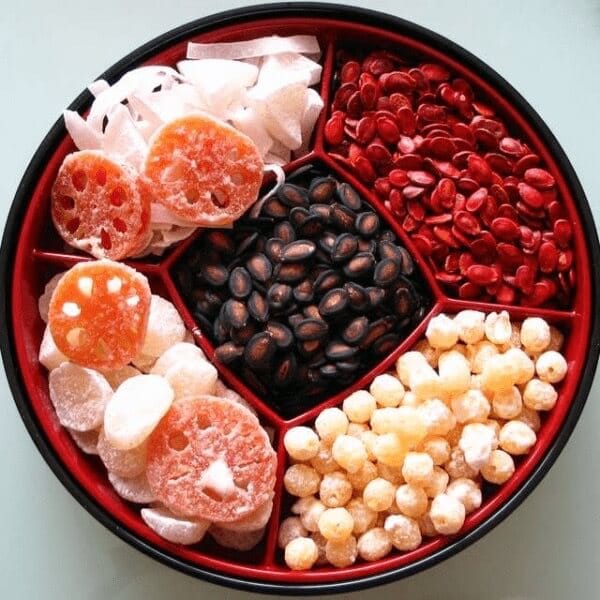
Regional Variations
Vietnamese candies are incredibly diverse, with each region offering its own unique specialties and characteristics.
Northern Vietnam
The northern region is known for peanut candy, green bean candy, young rice flake candy, and preserved fruits. These candies are often made from ingredients that are abundant in the area, such as green rice, peanuts, and dracontomelon. Their simple yet delightful flavors reflect the region’s agricultural richness.
Central Vietnam
In Hue, not trying cu do candy and ginger candy would be a missed opportunity. Cu do candy features a thin, crispy rice paper shell and a sweet, nutty filling made of peanuts, ginger, and molasses, offering a distinctively delicious taste.
Ginger candy, crafted from sticky rice flour, sugar, and ginger juice, is uniquely aromatic and flavorful. It is often enjoyed for its warming properties and its ability to soothe coughs.
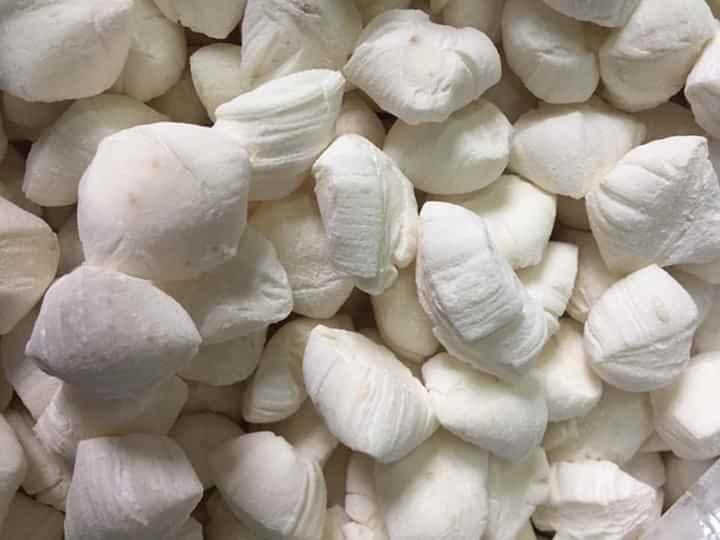
Southern Vietnam
The southern region, particularly Ben Tre, is famous for its chewy and fragrant coconut candy, made from fresh coconuts and malt. Other southern treats include pia cake, which features a multi-layered pastry shell filled with sweet durian and green bean paste, and banh tet, a traditional sticky rice cake with a savory mung bean filling that is especially popular during festive occasions.
Where to Find Vietnamese Candy
Local Markets
Local markets are ideal for tourists looking to buy specialties at reasonable prices. In larger cities, these candies can also be found in supermarkets, offering a convenient alternative.
Specialty Shops
In tourist areas, specialty shops offer a wide variety of local treats, often reflecting the region’s unique culture. For instance, in the Mekong Delta, you’ll easily find stalls selling products made from coconut, such as coconut candy, coconut bowls, and coconut oil. To locate these shops, simply search on Google Maps using the keyword “specialty shop.”
Online Retailers
For those short on time or unable to travel across Vietnam, online platforms like Shopee, Lazada, and Google provide an excellent alternative. These retailers offer a variety of Vietnamese specialties with fast nationwide shipping, making it easy to access regional treats from the comfort of your home.
Discover Vietnamese Sweets with Joy Journeys
For a truly authentic experience, tourists can enjoy Vietnamese candies as part of Joy Journeys’ tours. On our Mekong Delta discovery tours, we arrange visits to coconut candy and specialty chocolate factories, allowing customers to witness the production process firsthand. These experiences not only offer insight into traditional craftsmanship but also provide the perfect opportunity to buy unique gifts for loved ones.
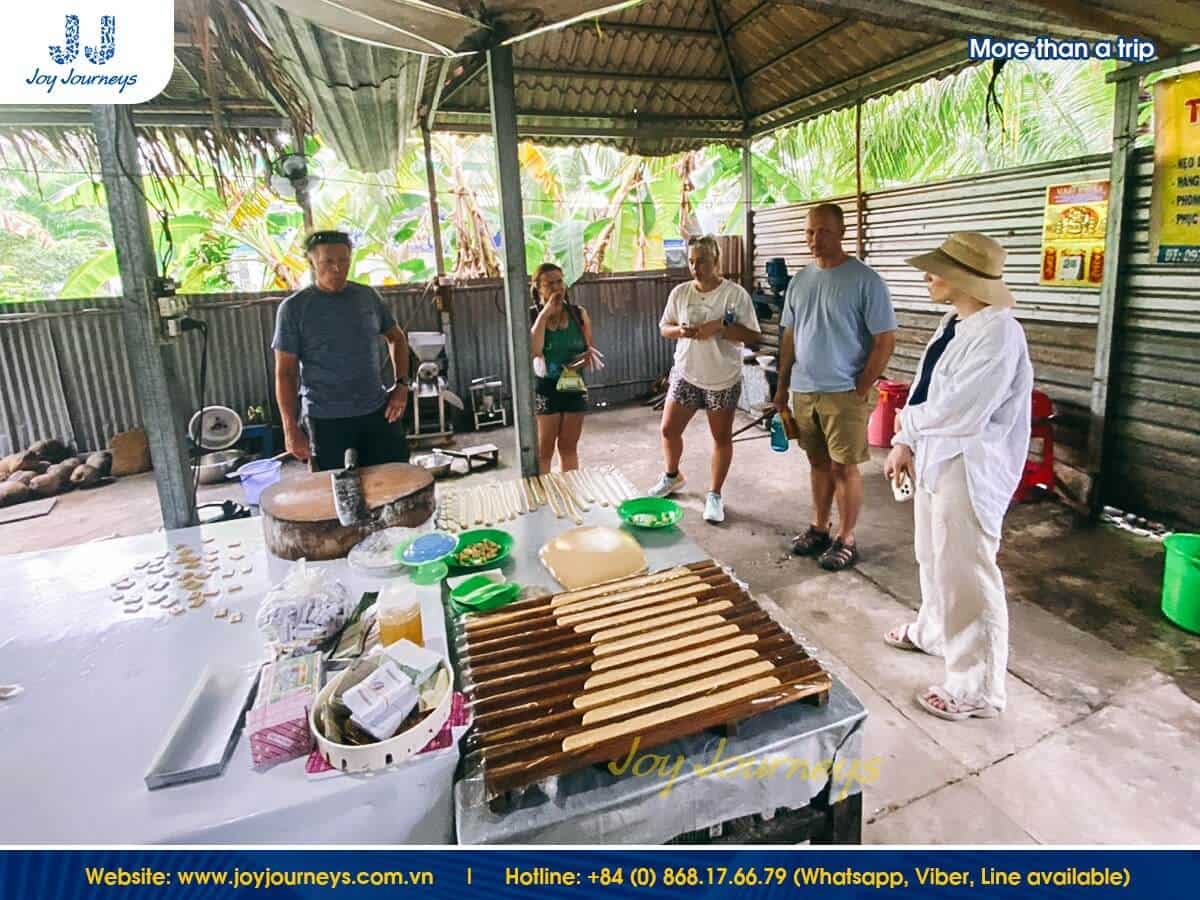
Frequently Asked Questions
What is the most popular candy in Vietnam?
Coconut candy or ‘keo dua’ is one of the most popular candies in Vietnam. Known for its sweet and creamy taste, chewy texture, and the natural fragrance of coconut, it is a beloved treat among locals and tourists alike.
What is the popular snack in Vietnam?
Bong gao (puffed rice) is among the most popular Vietnamese childhood snacks, cherished for its light and crunchy texture.
How much is 1 candy in Vietnam?
Vietnamese specialty cakes and candies are very affordable, typically costing around 50,000 to 70,000 VND per package, depending on the type.
What is crystal candy in Vietnamese?
Crystal candy in Vietnamese is referred to as jelly candy or ‘mut rau cau’.
Conclusion
When visiting Vietnam, tourists should not miss the opportunity to explore the unique aspects of the country’s cuisine. Beyond iconic dishes like pho, broken rice, and banh mi, Vietnam also offers an array of distinctive confectionery, including coconut candy, sesame candy, and ginger candy. These delightful Vietnamese candies not only satisfy your sweet tooth but also tell fascinating stories about the nation’s rich culture and culinary heritage.
Embark on this flavorful journey with Joy Journeys by visiting


Related Posts
Saigon’s “Flower Market Replica”: Where To Find Them
Ho Chi Minh City’s floral charm is not limited to its bustling wholesale markets. Imagine wandering through a place where vibrant petals, fragrant blooms, and the spirit of traditional Vietnamese markets come alive—without the overwhelming crowds. A flower market replica captures that magic, blending the beauty of fresh flowers with the charm of a curated, […]
Is it Safe to Travel to Vietnam Right Now? A Complete 2025 Guide
Vietnam has emerged as one of Southeast Asia’s most captivating destinations, drawing millions of visitors annually with its rich culture, stunning landscapes, and incredible cuisine. However, many travelers still ask: Is it safe to travel to Vietnam right now? This comprehensive guide provides you with everything you need to know about Vietnam travel safety in […]
Ho Chi Minh Cu Chi Tunnels Tour: The Ultimate Guide
The Cu Chi Tunnels stand as one of Vietnam’s most remarkable historical sites, offering visitors a profound glimpse into the ingenuity and resilience displayed during the Vietnam War. For travelers, a Ho Chi Minh Cu Chi tunnels tour represents an essential experience that combines education, adventure, and deep cultural understanding. This comprehensive guide will help […]